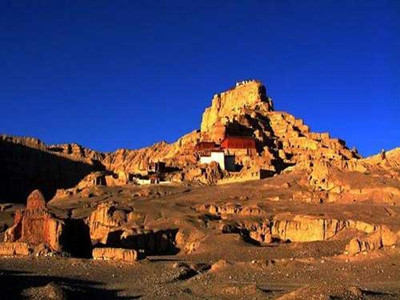Today, this is all the remains of Guge, its capital city, Tsaparang.
這是今日古格王朝的遺址,這是首都札布讓。
The grand vision of the first kings of Guge is reflected in this extraordinary city, literally carved into the side of a mountain.
這座建立在土山上的獨特古城反映出古格王朝前幾任國王的宏偉愿景。
Soaring to the heaven is the height of a modern 80-storey skyscraper.
高度相當于現代八十層樓高的摩天大樓直沖云霄。
It is, even today, one of the largest structures in Tibet.
即使在今天依然是西藏最大建筑之一。
Along its narrow lanes, you can almost hear the echoes of the many people, who toiled to gouge a city from this impenetrable mount of clay.
沿著窄巷行走當年工人挖壁開鑿的情形仿佛重現眼前。
A labyrinth of tunnels and stairs leads vertically 300 meters to the very top of the structure.
地道及樓梯層層往上三百公尺到達古城的最高處。
The view is breathtaking.
景色令人嘆為觀止。
But this is only a small part of the once mighty Kingdom of Guge.
但這只是古格王朝的一小部分。
At its height, it was twice the size of Great Britain.
在興盛時期古格王朝是英國的兩倍大。
Experts believe that somewhere here lies the answer to one of the most intriguing archaeological enigmas in Asia.
學者相信在古城可以解開亞洲最令人費解的謎團之一。
Who exactly built this extraordinary structure? And what could have possibly led to the downfall of the civilization?
這座古城是誰建立的什么原因造成古格文明由盛而衰?
譯文屬可可原創,僅供學習交流使用,未經許可請勿轉載











